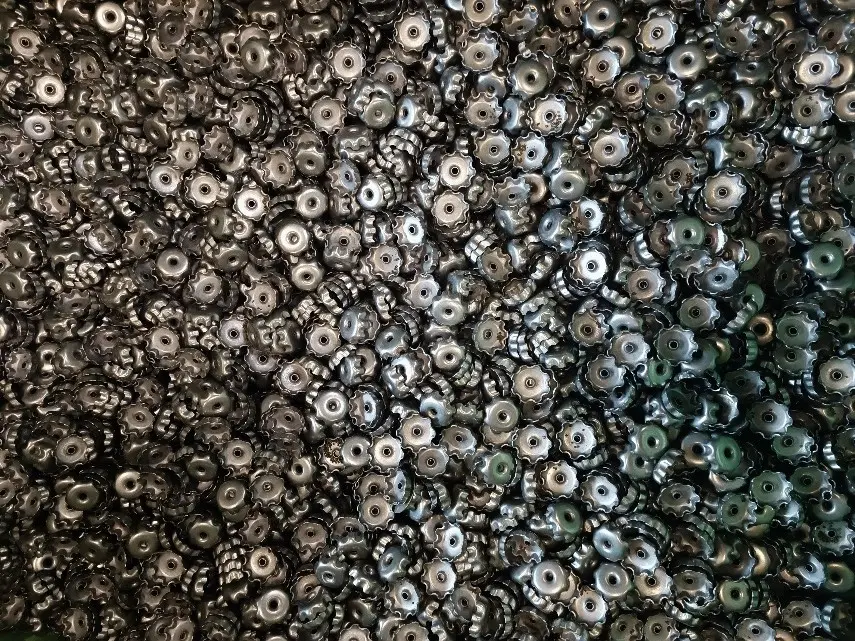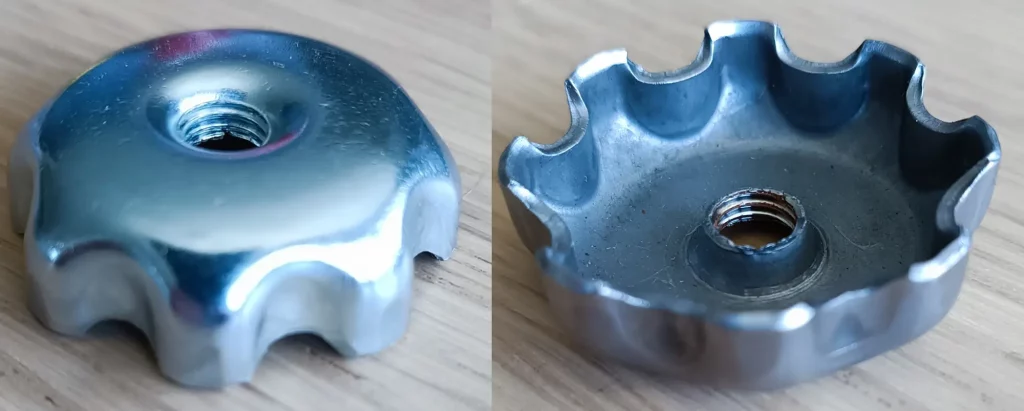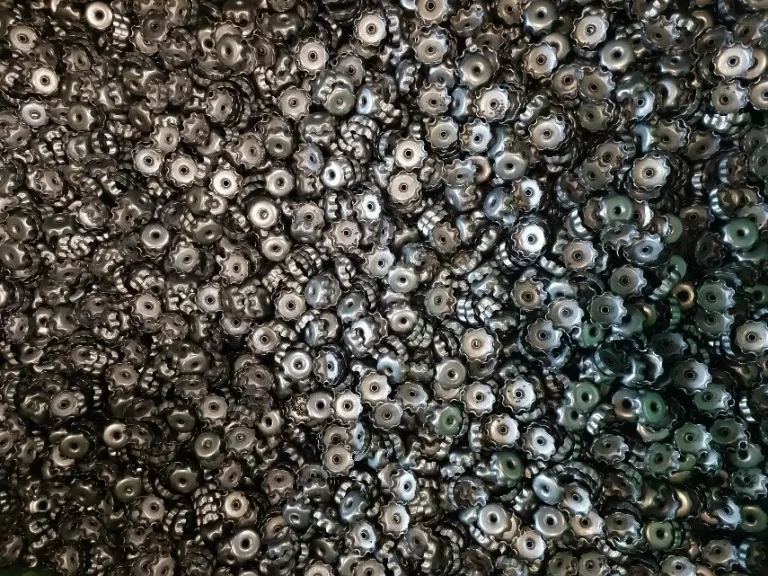At Kuchly, we support manufacturers in developing their production through custom-designed tooling. Our latest precision stamping achievement perfectly illustrates our expertise in manufacturing complex progressive dies.
Designed in collaboration with our client, this tool combines several technical processes: sheet metal cutting, stamping, collar forming, and form tapping.
A complete tool for the production of manual clamping knobs by stamping
The manual clamping knobs are common components in the industrial sector. They are found in mechanics, electronics, technical furniture, and professional equipment. Their particularity lies in their ability to offer effective clamping without the need for tools, while being simple to handle. These will be used for assembling demountable wooden structures.
To meet the specific requirements of this knob stamping project, we have developed a complete tool, capable of producing these knobs repetitively, reliably, and precisely thanks to our expertise in precision stamping.
Sheet metal cutting and stamping: part forming
Manufacturing begins with a conventional cutting operation, by sheet metal cutting, which allows for obtaining a clean blank of the part to be produced. This step is essential to prepare the material before final forming.
The part is trimmed at the end of the tool, and it is stamping that then ensures the precise formation of the knob. This forming process, through plastic deformation of the sheet metal, gives the part its characteristic shape, particularly the ergonomic reliefs that facilitate gripping.
Our experience in precision stamping allows us to guarantee parts with controlled tolerances, adapted to industrial rates, notably by avoiding folds and tears that can occur during deep drawing.
Collar forming to reinforce the threaded area
Before obtaining the thread, we perform collar forming at the center of the part. This forming operation has a dual benefit in our knob stamping process:
- Mechanically reinforce the threaded area,
- Prepare the tapping by optimizing the shape of the material to be worked.
Collar forming is essential here to ensure optimal thread resistance, especially in applications where the knob will be subjected to repeated tightening. The advantage is also to increase the number of threads compared to tapping performed only through the sheet metal thickness.
Form tapping: a robust thread without material removal
Form tapping is the process we chose for its mechanical advantages in this clamping knob stamping. Unlike conventional tapping by chip removal, this technique forms the thread by material deformation.
The benefits are numerous:
- No material loss,
- Thread reinforcement by strain hardening,
- Significant improvement in mechanical resistance.
Form tapping is therefore perfectly suited for this application where thread reliability is essential.
Strain hardening generated by this process reinforces the threaded area, increasing the mechanical resistance of the knob during repeated tightening.
Our global approach to tooling design by stamping
This knob stamping project illustrates the strength of our global approach:
- 👉 CAD design
- 👉 tool development and assembly
- 👉 precision machining
All these steps are carried out in our workshops. This complete mastery of the production chain allows us to ensure perfect technical consistency and optimal responsiveness.
Our goal is always to provide our clients with tailor-made industrial solutions in precision stamping, capable of integrating perfectly into their manufacturing processes or assemblies, with a guarantee of quality and flexibility.
Frequently Asked Questions about knob stamping
Why Choose Stamping to Manufacture Knobs?
Knob stamping allows for rapid mass production of parts with high dimensional regularity. This method also guarantees ergonomic shapes that facilitate gripping. The advantage is being able to integrate different steps (sheet metal cutting, forming, collar forming, tapping) into a single tool, which optimizes costs and reduces manufacturing times.
What is Collar Forming in Knob Manufacturing?
Collar forming is a shaping operation that creates a localized bulge in the sheet metal. For knobs, it reinforces the area intended to receive the thread. This process increases the number of usable threads and improves the mechanical resistance of the part during repeated tightening.
What are the Advantages of Form Tapping Applied to Knobs?
Unlike conventional tapping by chip removal, form tapping deforms the material to create the threads. This results in a strain hardening phenomenon that increases the robustness of the thread and extends the knob’s lifespan. Furthermore, the absence of chips reduces the risk of tool breakage and secures mass production.
What Materials are Suitable for Knob Stamping?
Depending on the intended use and mechanical constraints, several metals can be used: mild steel, high yield strength steel (HLE), stainless steel, aluminum, or brass. The choice depends notably on the desired resistance and the knob’s operating conditions (wear, corrosion, environment).


